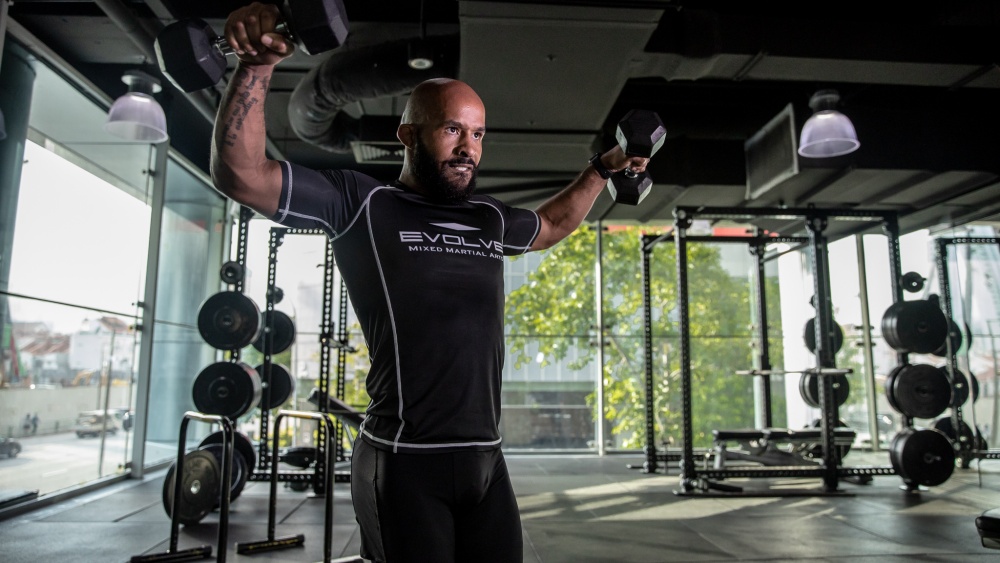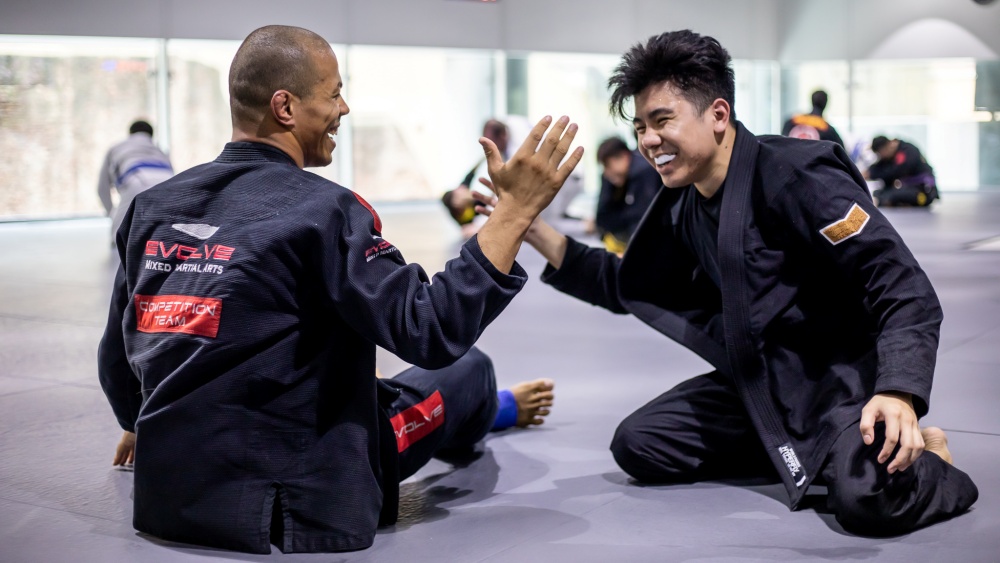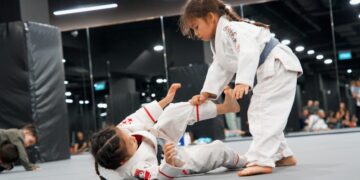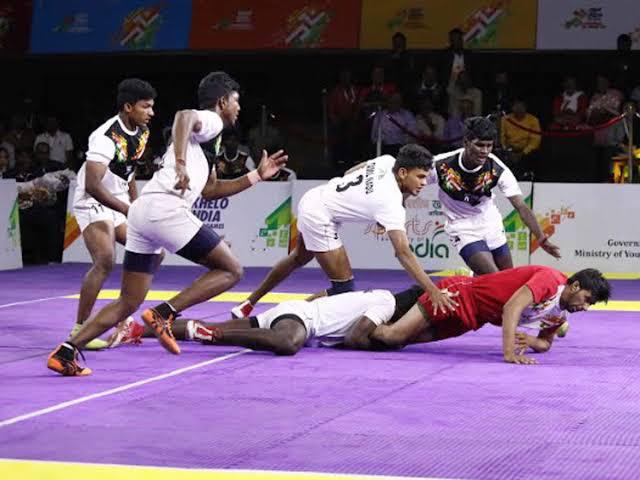Getting yourself pumped up to start a new workout routine is only half of the equation; staying motivated long enough to see the result of your hard work can be just as challenging. However, once you get past this hurdle, your odds of being able to stick to a fitness routine grow exponentially.
Many people don’t have a problem staying motivated when they first start a new workout routine, but things become trickier as life brings its challenges. With so many things vying for your attention, it’s easy to lose focus and start missing workouts. This article will review the psychology of fitness motivation and give you the tools you need to stick to your workout schedule despite any challenges life throws you.
Harnessing The Psychology Of Fitness Motivation To Your Advantage
Your source of motivation can be extrinsic or intrinsic. Extrinsic motivation refers to performing an activity to reap an external reward or avoid a negative consequence, such as starting a fitness program to lose weight. Intrinsic motivation refers to activities that provide inherent enjoyment and serve as your motivation source. Staying motivated for your workouts is much easier when you derive intrinsic motivation from them.
Studies show that people who derive intrinsic motivation are likelier to stick to their workout schedules long-term than those who seek extrinsic results.
Research suggests that people are most motivated when their actions provide three psychological needs: relatedness, competence, and autonomy. Autonomy refers to feeling in charge of your actions, while competence refers to the mastery you develop due to activities you’re engaged in. Relatedness is the feeling of community you derive by performing activities with others.
That’s one of the reasons why group activities like martial arts classes are often recommended for people looking to lose weight or increase their muscle strength and endurance. Martial arts training fulfills all three of these psychological needs, making it easy to stick with your schedule since training becomes something you look forward to, not something you must do to reach a goal.
Group activities like martial arts classes don’t get monotonous since every class is unique in its own way, and there’s always something new to learn. There’s also the social aspect that comes with these group activities. You get to mingle with people from different walks of life, and Cupid’s arrow might even strike.
Some of the simple things anyone can do to increase the intrinsic motivation they get from their workouts include:
1) Set Attainable Goals
Vague goals like “lose some weight” aren’t the best for motivating yourself. Instead, use the acronym SMART and ensure your goals are specific, measurable, achievable, relevant, and time-bound.
Set specific goals, like being able to run two miles in six weeks, and track your progress. The more you knock down these achievable goals, the more motivated you’ll be to stick to your fitness routine.
2) Make Enjoyable Activities The Bulk Of Your Training Routine

Training in Muay Thai not only helps you achieve your weight goals, but it also boosts your confidence and makes you more energetic!
Your fitness routine should never feel like a chore. Even experienced athletes can lose the motivation to work out when things become uninteresting. Go over your favorite activities and look for ways you can incorporate them into your training.
For example, sign up for martial arts classes if you’re a fan of combat sports. It will give you all the cardio you need to reach your weight loss goals, with each hour spent on the mat burning approximately 1,000 calories.
Other fun activities that can be added to any workout routine include dancing, sports like basketball and football, swimming, and hiking. Determine what brings you the most joy and make it the bulk of your training schedule.
3) Mix Things Up

ONE Flyweight MMA World Champion Demetrious Johnson enjoys mixing his martial arts training with weightlifting to make his workout sessions more enjoyable!
Some parts of your workout routine may become boring depending on your goals. For example, it’s hard to get past weightlifting if you want to gain muscle mass. You can make such parts of your routine more enjoyable by mixing things up so you’re not repeating the same exercises over and over again.
Mixing up your workouts will also help you to avoid plateaus, leading to more progress. Add different approaches to strength and conditioning, like high-intensity interval training, plyometrics, and weightlifting, to keep your workouts interesting.
4) Create A Support System

Whether it’s martial arts or other physical sports, training with a partner always makes sessions more fun!
Social support plays a vital role in helping you to stay motivated. Surround yourself with people who share similar fitness goals so you can encourage and hold each other accountable. Group activities are an excellent way to meet new people with similar fitness goals.
5) Focus On The Journey

Whenever you start a new goal, remember that it’s the journey and process that mold you. So always remember: enjoy the journey, reap the results!
Enjoying your fitness journey helps to keep you motivated as much as setting attainable goals. Learn to recognize the benefits of exercise, like increased energy levels, improved sleep, and better physical shape.
6) Build A Routine
Consistency is one of the keys to staying motivated. The more you do anything consistently, the easier it becomes for you to stick to it long-term. Making exercise a habit makes it easier to stay motivated. Consistency helps to form new habits.
7) Visualize Success
Use visualization techniques to stay motivated for your workouts. For example, you can spend a few minutes each day thinking about how your life would change if you achieved your fitness goals. Visualization can be used to reinforce your commitment to reaching your goals.
8) Reward Yourself
Create a reward system to celebrate every fitness goal you’ve achieved. Your reward can be as simple as buying new gear to work out with or enjoying a nice massage. These rewards will make you work harder towards your goals and give you a sense of accomplishment as you reach milestones.
It’s All In Your Mind
Fitness and mental health are deeply intertwined since physical activity helps to improve mental well-being and reduce the symptoms of disorders like anxiety and depression. Likewise, being in a good mental state helps you to stay motivated to accomplish your fitness goals.
Staying motivated to keep up with your workout routine starts by incorporating activities you love to make up the bulk of your workouts while using some of the techniques discussed above to make the less-than-favorable parts of your workouts more fun.
You may also like:
Understanding The Relationship Between Mental Health And Physical Fitness In Singapore
Functional Fitness For Everyday Life: Training Movements, Not Muscles
A trim waist and sculpted abs are the leading reasons why many of us want to work out and pursue exercises that work the abdominal muscles. And yet, toning your midsection has less visible but…
In the heart of Southeast Asia, Singapore is renowned for its diverse culinary landscape. As an island nation that treasures food, it’s evolved to cater to a multitude of dietary preferences. For martial artists training…
When working out, high-intensity interval training (HIIT) is a practical, easy, and quick way to reach your fitness goals. The approach is equally suitable for casual gym-goers and hardcore professional athletes. It’s also an exercise…
Leg day is often the most challenging but rewarding part of most people’s workout schedules. Your legs contain the largest muscles in your body, and getting those muscles toned and strong improves overall strength while…
Nutrient timing is a science field that strategically schedules when and what to eat during various periods throughout the day to optimize athletic performance when working out, speed up recovery, and optimize general health. Nutrition…
When working out, lasting weight loss often involves reworking the body’s physiology and metabolic processes. Successful weight loss happens when the body strikes a healthy balance between what it stores and burns. An active lifestyle…
The Philly shell is a defensive stance in boxing that’s characterized by a boxer keeping their lead shoulder up and tucked in toward their chin while leaning away slightly from their opponent. The boxer’s lead…
In Brazilian Jiu-Jitsu and Submission Grappling, the rise of the leg lock game over the past years has been nothing short of fascinating. John Danaher famously said that leglocks and takedowns were the few weaknesses…
Cornermen and women are the unsung heroes of martial arts. They rarely get any credit for the performances their fighters deliver during matches and their roles extend way beyond simply providing moral support for their…
Boxing has enjoyed a huge popularity boost in recent years thanks to factors like the many incredible champions and a growing number of influencers and celebrities willing to step inside a boxing ring. You probably…
In recent years, Singapore has rapidly emerged as a global hub for health, wellness, and fitness. With its world-class medical facilities, efficient healthcare system, and a proactive approach to public health, the nation has continually…
Brazilian Jiu-Jitsu (BJJ) is widely viewed as one of the best martial art to learn for self-defense for various reasons, like allowing smaller fighters to use leverage to defeat larger opponents. BJJ is a derivative…





































